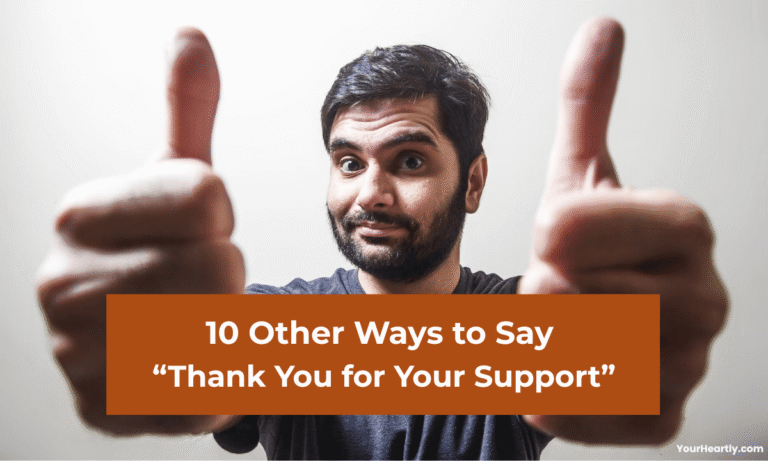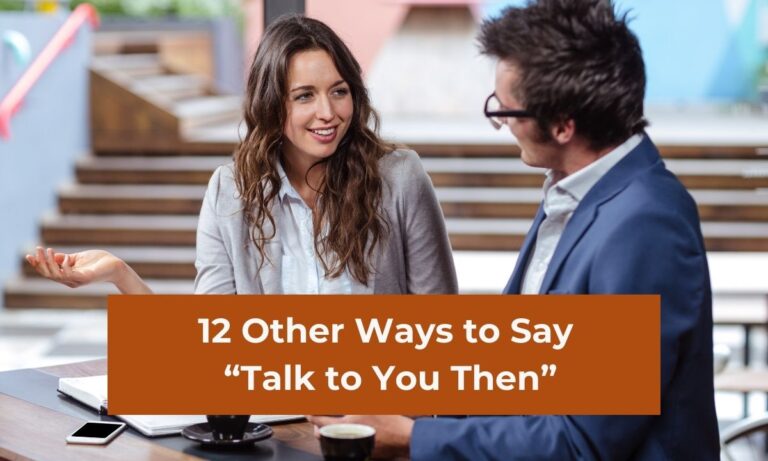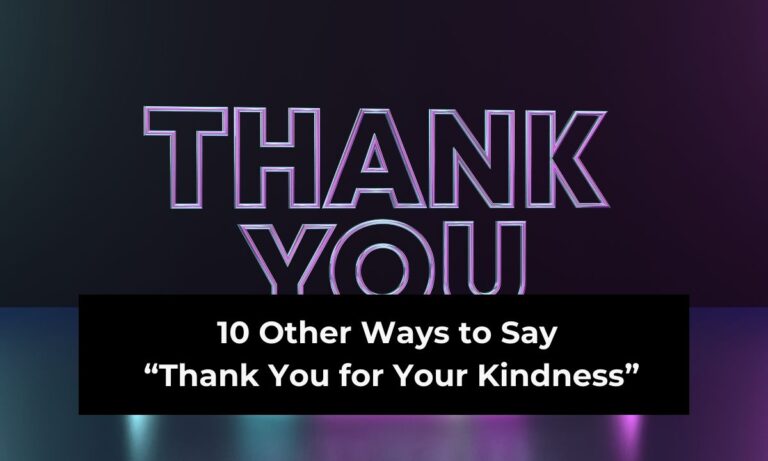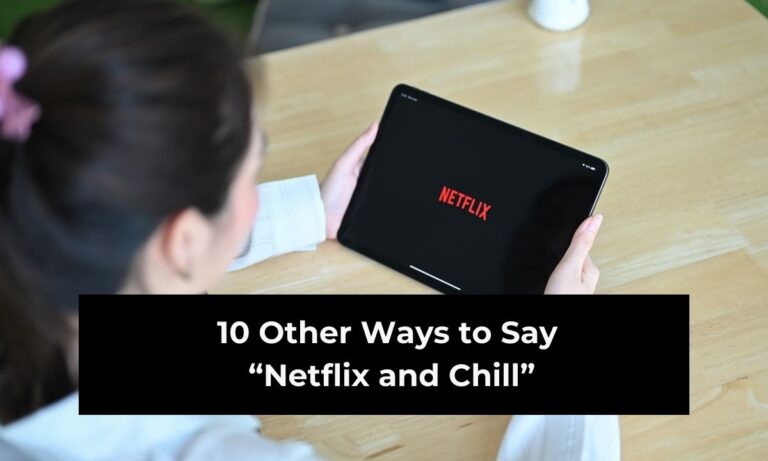Have you ever found yourself saying “You as well” over and over again, only to feel like it’s starting to sound a little repetitive?
Maybe you’re responding to a friendly “Have a great day!” from your coworker, or you’re texting back after someone wishes you a happy weekend. “You as well” works perfectly fine, but let’s be honest — it can start to feel a bit mechanical.
When you’re having a conversation, whether in person, online, or over text, small word choices can make a big difference in how warm, genuine, or memorable you sound. Using a variety of responses can make your interactions feel fresher and more personal. It also shows the other person that you’re really paying attention, rather than just pulling a standard reply out of habit.
The good news? You have plenty of friendly, natural-sounding alternatives that can replace “You as well” — without sounding forced or overly formal. These phrases can help you adapt to different situations, from casual chats with friends to polite exchanges with strangers, and even professional settings where you want to sound approachable yet respectful.

In this guide, you’ll discover 10 other ways to say “You as well” that are easy to remember and use right away. Each one comes with examples, a breakdown of when it works best, and tips for making it sound authentic.
Must Read:
- Other Ways to Say “God Bless You”
- Other Ways to Say “Thank You for Your Support”
- Other Ways to Say “Wishing You the Best”
Whether you want to sound warmer, more enthusiastic, or just more original, these phrases will help you keep your conversations lively and genuine. Let’s dive in.
1. “Same to You”
If you’re looking for something short, casual, and friendly, “Same to you” is a go-to alternative.
This phrase works well when you want to keep the tone light without sounding stiff. It’s particularly great for casual settings, like chatting with neighbors, coworkers you know well, or friends. The beauty of “Same to you” is that it feels conversational but still polite.
Example:
- Person A: “Hope you have an amazing trip!”
- Person B: “Thanks! Same to you.”
You’ll notice that “Same to you” works best when the other person’s comment applies to you as well. It’s quick, easy, and requires no extra thought — making it perfect for everyday exchanges.
If you want to make it even warmer, you can add a little emphasis: “Thanks! Same to you!” The exclamation mark adds a touch of enthusiasm, which can help the message feel more heartfelt.
One thing to keep in mind is that “Same to you” can sound a little flat if you overuse it. If you find yourself saying it in every conversation, rotate it with some of the other phrases in this list to keep things fresh.
2. “Likewise”
“Likewise” is a simple yet elegant way to return the sentiment. It works especially well in more formal or professional contexts, but it doesn’t feel overly stiff in casual conversations either.
When someone wishes you something, “Likewise” acts as a direct mirror — it bounces the same good wish right back to them.
Example:
- Person A: “It was great working with you.”
- Person B: “Likewise.”
Because it’s just one word, “Likewise” can make you sound confident and composed. It’s a great choice when you don’t want to overcomplicate your response but still want it to feel polished.
You might use “Likewise” in networking events, business meetings, or formal emails, but it also fits nicely in everyday exchanges where you want to sound a little more refined.
If you want to soften it for casual use, you can pair it with “Thanks” or “It was great seeing you too.” For example: “Thanks, likewise!” This keeps the warmth while still maintaining the elegance of the phrase.
3. “And to You”
“And to you” has a friendly, almost old-fashioned charm to it. It’s a lovely way to mirror a wish back to someone, especially in spoken exchanges.
This phrase works well when someone wishes you a happy holiday, good luck, or any other kind gesture. It feels personal yet polite.
Example:
- Person A: “Merry Christmas!”
- Person B: “And to you!”
“And to you” tends to sound warmer if you deliver it with a smile or upbeat tone. In writing, adding an exclamation point can help convey the same friendly energy.
While it’s not as common in casual everyday chats as “Same to you,” it shines in seasonal greetings, ceremonial occasions, or when you want your reply to sound thoughtful without adding too many words.
Think of it as a polite, slightly more classic twist on “You as well.”
4. “Back at You”
If you want to keep things light and playful, “Back at you” is a perfect choice.
This phrase works best in casual settings and with people you know well. It carries a sense of fun and friendliness that makes it ideal for informal conversations.
Example:
- Person A: “Hope you crush your presentation today!”
- Person B: “Thanks, back at you!”
“Back at you” is great because it feels spontaneous. It’s not something you’d typically use in a business email, but in casual chats, it makes your response feel energetic and genuine.
You can also jazz it up by adding “right” at the beginning: “Right back at you!” This gives it even more emphasis and enthusiasm.
Since it’s a bit playful, it’s best to use it when you’re on familiar terms with the other person. In formal situations, it might come across as too relaxed.
5. “You Too”
One of the simplest and most common alternatives is “You too.” It’s quick, natural, and fits into almost any casual interaction.
It’s perfect for short exchanges, especially when you’re in a hurry or when the other person’s comment doesn’t need a long reply.
Example:
- Person A: “Have a great weekend!”
- Person B: “You too!”
“You too” works because it’s universal — you can use it with friends, coworkers, strangers, and it always feels appropriate. However, because it’s so common, it can sometimes feel a little automatic.
To make it feel warmer, you can pair it with a thank-you: “Thanks, you too!” This tiny addition instantly makes it more personal.
6. “Hope the Same for You”
This phrase adds a touch of sincerity and warmth to your response. It goes beyond simply returning the wish — it expresses that you genuinely want the other person to have the same positive experience.
Example:
- Person A: “Hope your vacation is wonderful!”
- Person B: “Thanks, hope the same for you.”
It works particularly well when the wish is more specific, like “Good luck on your exam” or “Enjoy your new job.” It shows you’re not just reflexively responding, but actually thinking about what they said.
The tone is friendly yet considerate, making it suitable for both casual and semi-formal situations.
7. “Much Obliged”
“Much obliged” has a warm, slightly old-fashioned feel to it, and it’s a charming way to acknowledge someone’s kind words while returning them.
It can sound especially good in spoken conversation, where tone and delivery can highlight the politeness.
Example:
- Person A: “Enjoy the rest of your day!”
- Person B: “Much obliged — you too.”
It works best when you want to blend gratitude with a return wish. While it’s not as common in everyday language today, it can make you stand out as polite and thoughtful.
8. “Wish You the Same”
This phrase is straightforward yet heartfelt. It makes it clear that you’re intentionally passing the same wish back to them.
Example:
- Person A: “Have a safe trip home!”
- Person B: “Thank you, wish you the same.”
It’s slightly more formal than “You too,” which makes it great for professional settings, polite exchanges, or when you want to sound extra considerate.
9. “Return the Favor”
While less common in this context, “Return the favor” can work in playful, casual situations.
Example:
- Person A: “Enjoy your day off!”
- Person B: “Thanks, I’ll return the favor.”
It carries a lighthearted feel and works best when you have a friendly, joking rapport with the other person.
10. “All the Best to You”
If you want your response to feel thoughtful and complete, “All the best to you” is a beautiful choice.
It works in both spoken and written form, making it versatile for everything from friendly chats to professional emails.
Example:
- Person A: “Good luck with your new project.”
- Person B: “Thanks, all the best to you as well.”
It’s warm, genuine, and leaves a positive impression — perfect for situations where you want to close the conversation on a high note.
Conclusion
Language is full of possibilities, and “You as well” is just one way to return a kind sentiment. By adding variety to your responses, you make your conversations more engaging and personal.
The key is to match your choice of phrase to the situation — casual with friends, polished for professional settings, and heartfelt when you truly want to convey warmth. Whether you go with something short and sweet like “You too,” playful like “Back at you,” or thoughtful like “All the best to you,” you’ll come across as more genuine and attentive.
Small changes in the way you respond can make a big difference in how people feel about your interactions. So next time someone wishes you well, try switching up your reply — you might be surprised at how much more engaging the conversation becomes.
FAQs
1. Can I use these alternatives in professional emails?
Yes — just choose more formal options like “Likewise,” “Wish you the same,” or “All the best to you.”
2. Which option sounds the most casual?
“You too” and “Back at you” are great for casual settings with friends or people you know well.
3. Is “Likewise” too formal for everyday conversation?
Not at all — while it works in formal situations, it’s still perfectly fine for casual chats.
4. How do I make these phrases sound warmer?
Add a “thanks” or exclamation mark, or use a friendly tone when speaking.
5. Can I use “Much obliged” in text messages?
Yes, though it might feel more natural in spoken conversation due to its old-fashioned charm.





